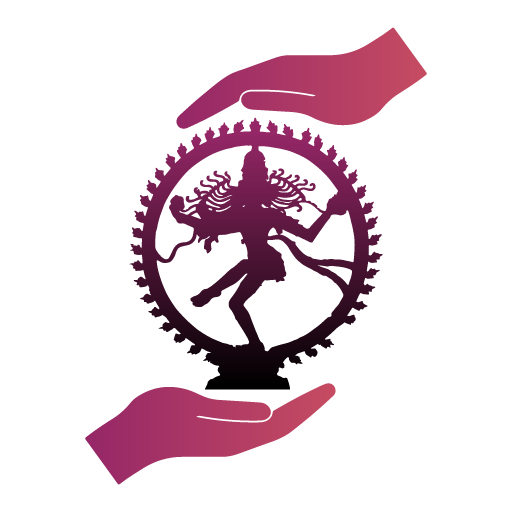Ladakhi Cuisine: High Foods for the Home and Heart
The Union Territory of Ladakh lies in the Indian Trans-Himalayan region. It is a high cold desert area and constitutes India's highest plateau with elevations reaching over 3000 m. Located between the imposing Karakoram Range in the North, the Himalayan Range in the South and West, the Tibetan Plateau in the East, Pakistan in the West, China in the Northern and Eastern part and Lahaul and Spiti of Himachal Pradesh in the South-East. It is not surprising that this ancient land mass served as a strategic thoroughfare to important trade routes in the past. This interesting history of Ladakh has left an indelible mark on many of its cultural facets including cuisine. The culinary influences from neighbouring regions like Tibet and Kashmir can be seen in the way dry fruits and aromatic spices are used to prepare delicacies. The major settlements in this territory are typically located along banks and terraces of rivers and streams while the nomadic communities live on the plateau at elevations as high as 4500 m above sea level.
An Evolving Cuisine: Elements of Change and Continuity
For many centuries the population of Ladakh was dependent on subsistence agriculture and were self-sufficient in terms of food-grain production. Despite harsh climatic conditions the Ladakhis have managed to devise an outstanding agricultural system. The traditional Ladakhi diet consists of barley and wheat and these cereals have served as the basis of their nutritional system. The other main crops are pulses, apricots and potatoes. For other items like spices, rice and tea, they have had to be dependent on imports. However, with changes in the socio-economic circumstances brought about by the opening of the Srinagar-Leh road in 1962, which connected the previously isolated region with the mainland, major changes were noticed in terms of food habits as well. Rice, which used to be a luxury item for Ladakhis, is now part of their diet as an affordable staple. De si or rice pudding where rice is cooked with butter and then mixed with sugar is a popular dish. The steady availability of non-local food items due to improved transport lines and connectivity has meant that new food habits have emerged. Along with it, marked seasonality in food habits can be observed. The Ladakhis are seen to consume locally produced cereals like barley and wheat during the winter months while rice is consumed during the summer.
Staples and Features that Shape the Cuisine
This land locked cold desert is not only located at a high altitude but also experiences harsh winters for long stretches of time. In the cold harsh region of Leh, farming is only possible during a short window of time, from May to August. During this short growing season, fresh green vegetables like spinach, radish, sugar beet, peas and Chinese cabbage or napa cabbage are very much prized in this tough terrain. The green vegetables are either cooked fresh or dried for later use in the long winter months. These vegetables are often mixed with zho (curd) or tara (buttermilk) to make tangthur or they are simply added to thukpa. Apricot grows abundantly in Ladakh and these fruits are poached in syrup to make phating and served with zho either for breakfast or as dessert. The sea buckthorn shrub grows in abundance here and its small orange berries locally called the chastu ruru are abundant repositories of Vitamin C and saturated and polyunsaturated fats. Sea buckthorn is an important cash crop in Ladakh and the Ladakhis turn the chastu ruru into preserves and squashes.
The Ladakhis traditionally consume readily available meats like sheep, cow, goat and yak which they rear. They also take milk from these animals and process it to make products like butter, zho, labo (soft cheese) and chhurphe (dried cottage cheese). The leftover whey from butter making is called chhurkhu and it is used during cooking. In the past, the dairy products of eastern Ladakh were greatly valued and they would be bartered for salt with Tibet and Zanskar. They also make use of several dry fruits along with aromatic spices to add flavour and taste to their dishes. One of the most common spices used in Ladakhi cooking is chillies, favoured for its body heat producing propensities. Due to the prevailing harsh climatic conditions the cuisine focuses mainly on hot broths, soups, brews and dishes which keep the body warm.
Signature Dishes of Ladakhi Cuisine
Tsampa-
Tsampa or namphey is a staple food of Ladakh and it has been around for centuries. Tsampa is toasted barley flour and is usually mixed with tea, soups and dumpling wrap mix. This nutritious powder is usually given to the youngsters and old people and is generally taken for breakfast. The barley flour for the tsampa is ground using the rantak or the traditional watermill of Ladakh.
Paba-
The paba is a dry bread made from tsampa and ground pea flour mixed with boiling water. This bread is slathered with ghee (clarified butter) and served with lentils and cooked vegetables.
Tingmo-
The tingmo is a Tibetan leavened steamed bun which is often served with a vegetable or meat stew. On the streets of Ladakh, the stew is usually prepared in a spicy manner with undertones of sweetness. The tingmo is often eaten as breakfast or a tea-time snack.
Chutagi-
This dish literally translates as “water bread” and is a distinctive Ladakhi food full of nutrition. The bread dough is first flattened and then cut into circular shapes before being given the final shape of a bow-tie. This dough is then cooked in a thick meat or vegetable soup. The chutagi constitutes a heavy, nutritious meal and is usually served during the harvest season.
Tagi khambir-
This traditional Ladakhi bread is easily recognizable by its pan-shaped form. It is baked out of wheat flour and is quite thick, chewy and crusty which makes it very filling. The Ladakhis start their day with these freshly baked breads which are leavened with an indigenous yeast called pul. However, baking powder is also used as rising agent. The tagi khambir is baked on an iron or stone griddle which is kept over a fire supported by stones or on top of the Ladakhi oven called the thup. The thup is fired by wood or dung fuel. The bread is placed on coals before being served. There are different kinds of tagi like the tagi thalkhuruk and tagi mer-khour. The tagi thalkhuruk is baked in the ashes of a fire while the tagi mer-khour is made with a dough which has butter and egg white. The tagi mer-khour is generally taken with apricot jam.
Ladakhi Pulao-
The Ladakhi pulao traces its origin to the Yarkandi pilau and is an important addition to the Ladakhi cuisine. This flavourful dish is made of rice, aromatic spices and mutton stock. The rice is left to soak in the flavour and aroma of the spices and juices of the mutton stock. It is served with a garnish of caramelized onions, carrots and nuts for texture.
Skyu-
The wholesome soupy skyu is a traditional dish made from wheat and root vegetables. The soft wheat dough is formed into bite-sized pieces of ear-shaped noodles and cooked with carrots and turnips. This staple dish is served along with meat and vegetables.
Thukpa-
This popular Tibetan noodle-soup is also a Ladakhi favourite. Thukpa, made by adding noodles, traditionally barley or wheat noodles or namphey (toasted barley flour; tsampa) noodles, and vegetables or meat to clear soup, is consumed for either lunch or dinner in Ladakhi homes. The season and availability of ingredients determines what goes into the making of the thukpa. The noodles for the thukpa are pressed into shape by hand as is often the case with non-glutinous barley flour which is difficult to roll out into noodles easily. The womenfolk often sit around the warm hearth in their homes and press the noodle dough into small ear or cup shaped pieces. Thukpa is served with a generous garnishing of chhurphe.
Mokmok-
The quintessential mountain food, the mokmok or momo is a popular culinary option in Ladakh. This steamed dumpling can be made with meats like lamb or vegetables. Momos are served in a bowl of clear soup made from meat bones or with red chilli chutney.
Popot-
This grain soup is a traditional dish of the Kargil region and is usually featured in the seasonal Mamani food festival. During the festival the local people prepare special dishes at their homes and gather at the festival venue early in the morning of the last Thursday or Friday of the second month of the Ladakhi calendar. The popot is made of soaked wheat and peas which are then cooked with goat or sheep head or leg.
Gurgur cha-
This salty butter tea is a perennial Ladakhi favourite. It is prepared by adding salt and butter to brewing milk tea. This tea is enthusiastically consumed by the Ladakhis as the drink offers much needed insulation to the body against the elements of nature. The name “gurgur” comes from the sound produced in the long tube in which tea, hot water, salt and butter are churned. The churned tea is then transferred to an earthenware kettle which is kept inside a pot to keep warm. Small cups of gurgur cha are drunk throughout the day by the Ladakhis.
Chhang-
Chhang, a mildly alcoholic beverage, is locally brewed from fermented barley and is an essential part of most Ladakhi festivities. In the past when tea was a luxury and there was plenty of barley at hand, Ladakhis would drink chhang all at all times during the day instead of gurgur cha. This practice is still prevalent in some parts of Ladakh. Chhang is also a ritual drink for Ladakhis and is served during festivals and special occasions. The girl's family is offered chhang when a marriage proposal is made and the acceptance of chhang is taken as approval of the match.
Ladakhi cuisine features dishes which complement the climatic conditions of the place. They contain a good balance of vegetables and meat and are well-flavoured and highly nutritious. They usually involve freshly procured ingredients and the seasonings are centered on salt, onion and garlic with generous helpings of chillies. This cuisine is a testament to the high-altitude life of the Ladakhis who have managed to bring so much liveliness and heart to their foods- a true embodiment of the juley (Ladakhi greeting) spirit and ethos.
 Government of India
Government of India







































 Recognizing the ongoing need to position itself for the digital future, Indian Culture is an initiative by the Ministry of Culture. A platform that hosts data of cultural relevance from various repositories and institutions all over India.
Recognizing the ongoing need to position itself for the digital future, Indian Culture is an initiative by the Ministry of Culture. A platform that hosts data of cultural relevance from various repositories and institutions all over India.